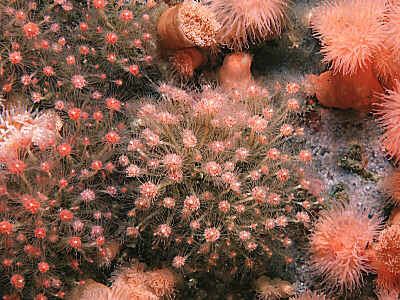Scientific name Tubularia Order Anthomedusae | Family Tubulariidae Rank Genus | |
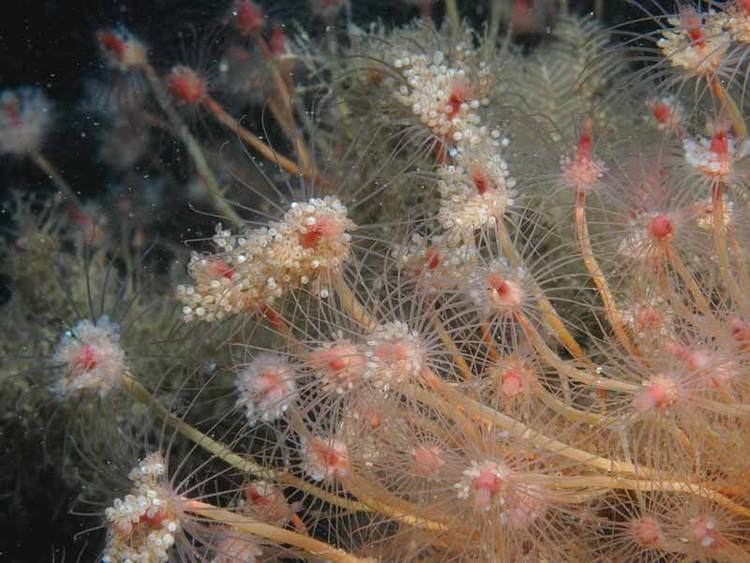 | ||
Similar Hydrozoa, Cnidaria, Jellyfish, Ectopleura, Tubulariidae | ||
Protula tubularia
Tubularia is a genus of hydroids that appear to be furry pink tufts or balls at the end of long strings, thus causing them to be sometimes be called "pink-mouthed" or "pink-hearted" hydroids. Their average height is 40–60 mm and the diameter of the polyp and tentacles is 10mm. Tubularia indivisa and Tubularia larynx can be difficult to distinguish and the two often grow together. In T. larynx the stems branch while in T. indivisa they are unbranched. T. larynx is described as:
Contents
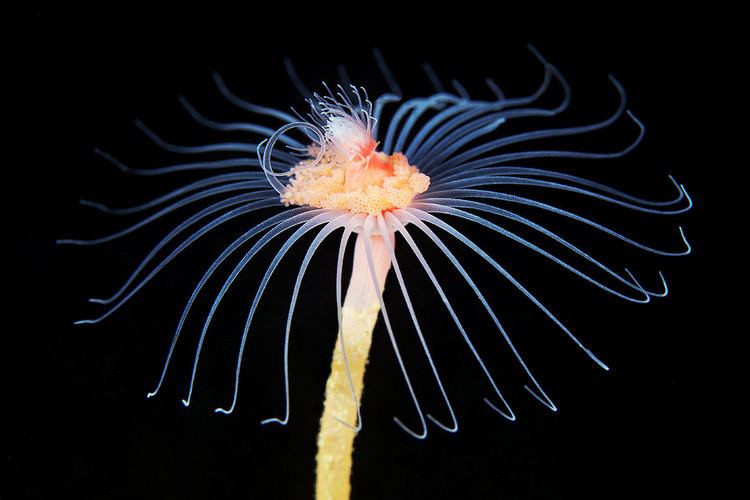
The stems are tubular, with a yellowish coloured tegument and are branched at the base. The polyp colour is pale pink through to red, and consists of a central circlet of oral tentacles surrounded by paler but larger aboral tentacles
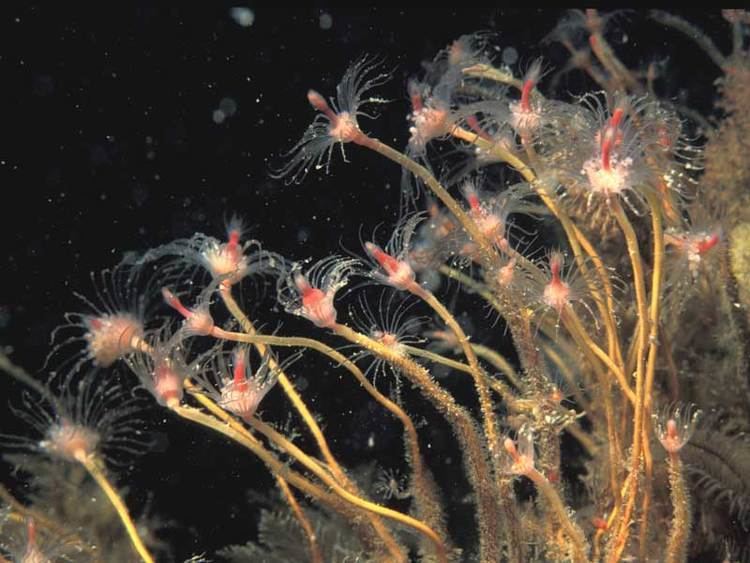
Kinkaider sudburian tubularia
Habitat
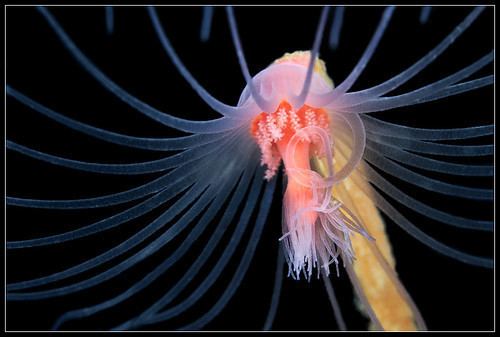
T. larynx is usually found on rocks or attached to algae. It is most common in shallow water, fouling piers and on the undersides of boats; in the British Isles, seas surrounding Great Britain, and the Americas. T. larynx grows in colonies and can tolerate exposed habitats and strong water currents.
Life cycle

During the summer time, sperm are released into the water and attracted to female reproductive structures by means of a chemical substance. Internal fertilization occurs in the female medusoids.The fertilized eggs develop into actinula. These larvae develop directly into a new polyp. Although the medusa are attached to the polyp, the life cycle resembles that of typical Cnidarian with the polyp reproducing asexually and the medusa producing egg and sperm.
